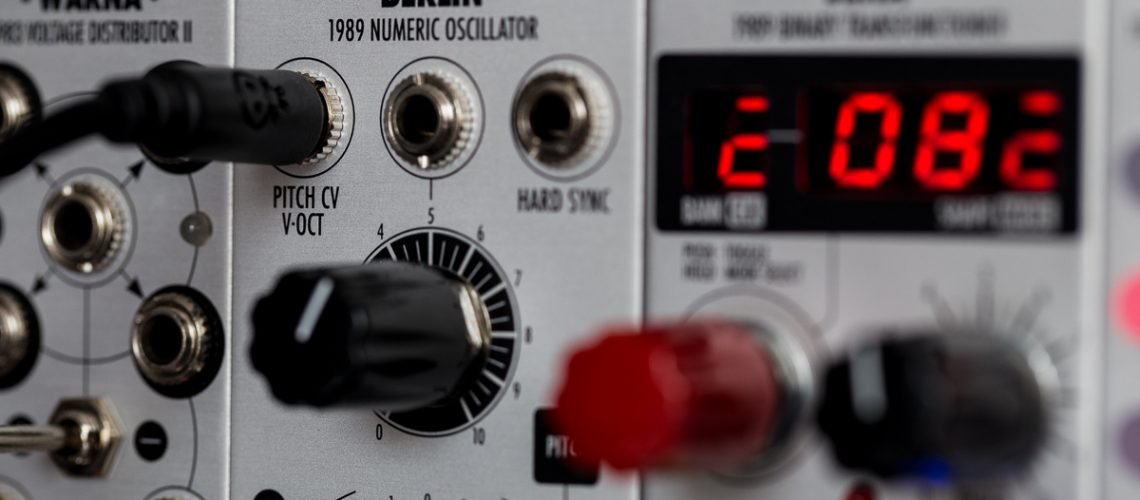The newest hardware from Xaoc Devices is Berlin. On its own, it’s a very respectable compact VCO with LFO mode and extremely wide range for tracking and clock. But connect it to one of the company’s Leibniz Subsystem modules, and a whole world of binary hacking unfolds.
What do you do when Eurorack is mature, and you want to broaden the audience? Well, of course, the low-hanging fruit is 17th-century German polymath Gottfried Wilhelm Leibniz and some binary mathematics! (Here, let me pander a bit – clickbait! – and link to some Leibniz texts on binary math in translation, which in turn links to Chinese historical number representation.)
The subsystem connects a range of modules for shared operation: Drezno, Gera, Lipsk, Jena, Erfurt, Poczdam, Ostankino, and Odessa [apologies for their extra ‘s’]. These opens up shared 8-bit signal processing with audio, CV, trigger, and gate possibilities. You can read up on some interesting applications in a running thread on ModWiggler; it also includes clever rhythmic generators and whatnot.
So, with just the Berlin module, you’ve already got a useful VCO:

- Wide-range VCO with LFO mode (up to 20 octaves of tracking)
- 30 seconds in LFO mode up to 250 kHz
- Extremely wide-ranged clock source – up to 20 MHz
- Manual and voltage control over all parameters – see the panel, that includes octave switching access.
- Square and Saw/Leibniz outs
But combine Berlin with Jena or Rostock, for instance, and you get hackable wavetables and waveshaping. You get simultaneous output from each of the outs, so you can run a pure square out and then your combined Lebniz output. You also get direct control over LBZ LINK.
All of this fits in 8HP with +40/-20mA power draw.

It’s available now for an MSRP of 220 EUR. At that price, even if you completely ignore the Lebniz stuff, this looks like a good buy – I don’t know of any other compact VCO/LFO with this kind of range inboth directions, let alone for this price.
I absolutely adore their Batumi II quad LFO, too – XAOC is making some of the best stuff out there. Berlin details:
PS, if you like the sound of binary math and wavetable hacking, that’s possible with the integration of V4-CO and GLITHc from Liquid Sky, too – see my review. It uses a different interface (and math via patch cord), but it’s up the same alley and the two systems together would be wild fun – the joy of voltage and binary math, all in one.
Oh, and – apologies, trigger warning for graphic violence?
Guess I should have put that at the beginning. Uh… okay, AI!




